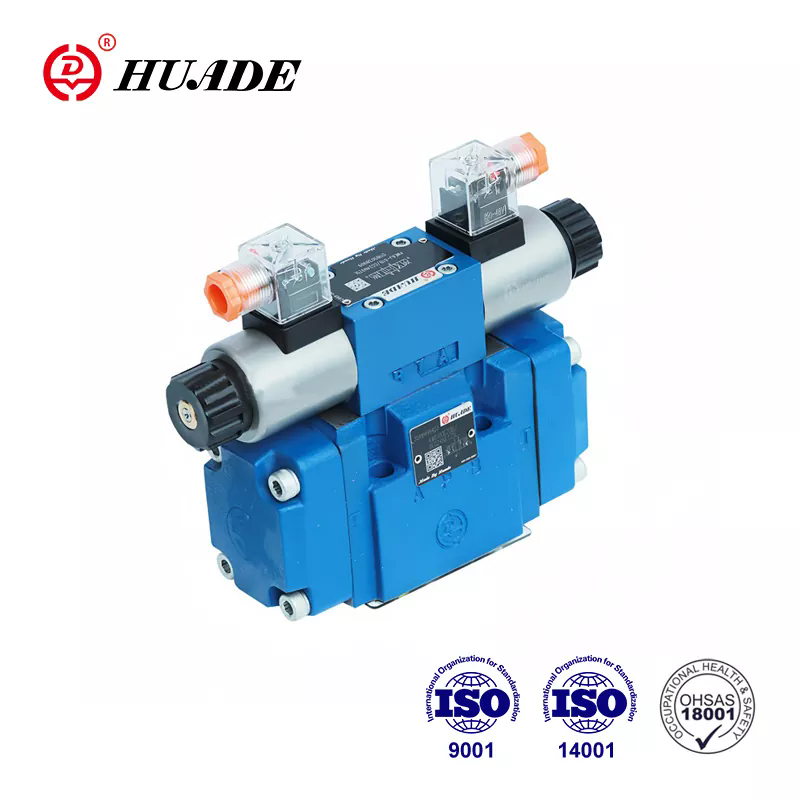Understanding Directional Valves: The Backbone of Hydraulic and Pneumatic Systems
2024-09-30
In the world of hydraulics and pneumatics, directional valves play a critical role in controlling the flow of fluids (oil, air, etc.) within a system. These valves help direct the fluid to the right components, ensuring that machines operate efficiently and safely. Without directional valves, most hydraulic and pneumatic systems would simply not function as intended.
In this blog, we’ll explore what directional valves are, how they work, the different types available, and why they are essential to various industrial applications.
What is a Directional Valve?
A directional valve is a mechanical or electromechanical device that directs fluid flow within a hydraulic or pneumatic circuit. Essentially, it acts as a gatekeeper, determining which direction the fluid will flow by opening, closing, or partially obstructing the passage.
Directional valves are commonly used in industrial machinery, heavy equipment, and manufacturing processes, where precise control of fluid flow is necessary to move components, power cylinders, or operate motors.
How Does a Directional Valve Work?
The basic function of a directional valve is to either allow or block the passage of fluid. This is achieved by shifting the internal components, typically spools or poppets, to different positions. The fluid flow is then directed to various outlets, determining whether it will move into a certain actuator, cylinder, or return to the reservoir.
Directional valves are generally classified by:
- Number of ports (entry and exit points for fluid)
- Number of positions (the number of discrete positions the valve spool can occupy)
- Actuation method (how the valve is controlled, whether manually, electrically, or hydraulically)
For example, a common type of directional valve is the 4/3-way valve, which means it has four ports and three distinct positions that can control multiple flow directions.
Types of Directional Valves
There are several types of directional valves available, each designed for different applications and operational requirements. Let’s dive into the most commonly used ones:
1. Spool Valves
Spool valves are the most common type of directional valve used in hydraulic systems. These valves consist of a cylindrical spool that moves back and forth inside a housing. The spool’s position determines which ports are open or closed, directing the flow of fluid.
- Best for: Applications requiring precise control of fluid flow
- Pros: Versatile, available in multiple configurations
- Cons: More complex than simpler valves like poppet valves
2. Poppet Valves
Poppet valves use a disc or ball that seals against a seat to control fluid flow. When the valve is actuated, the poppet lifts from the seat, allowing fluid to pass through. These valves are quick and reliable, making them ideal for systems requiring rapid response.
- Best for: High-pressure and high-flow systems
- Pros: Fast-acting, highly durable
- Cons: Limited flow control compared to spool valves
3. Solenoid-Operated Valves
Solenoid-operated valves are electrically actuated, using a solenoid coil to move the internal components. These valves offer a high degree of automation and can be controlled remotely. They are commonly used in systems where quick and precise switching is required.
- Best for: Automated and remote-controlled systems
- Pros: Fast response time, highly reliable
- Cons: Requires electrical power, potentially more expensive
4. Lever-Operated Valves
These valves are manually operated using a lever or handle. They are simple, cost-effective, and ideal for applications where full automation is not required. Lever-operated valves are often used in smaller, simpler systems or as backup controls in more complex systems.
- Best for: Simple, manually controlled systems
- Pros: Easy to operate, no power source needed
- Cons: Requires manual intervention, slower operation
Importance of Directional Valves in Hydraulic and Pneumatic Systems
Directional valves are the control center of any fluid power system, and their importance cannot be overstated. Here’s why they are crucial:
1. Controls the Flow of Fluid
Without directional valves, you wouldn’t be able to control where the hydraulic or pneumatic fluid goes. This flow control is essential for operating machinery, actuating cylinders, and driving motors in various systems.
2. Ensures Safety
In systems that operate under high pressure, such as hydraulic circuits, safety is a top priority. Directional valves can be configured to ensure that fluid only flows when it is safe, preventing accidents and equipment damage.
3. Optimizes System Performance
By controlling the direction of fluid flow, directional valves can optimize the efficiency and performance of a system. This leads to more precise movements in machinery and can even help reduce energy consumption in some systems.
4. Prevents System Overload
In complex systems where multiple actuators or cylinders are in use, directional valves can help regulate fluid distribution to prevent overload or malfunction. This protects both the equipment and the operator.
How to Choose the Right Directional Valve
Selecting the right directional valve for your system is crucial for both efficiency and safety. Here are some factors to consider when choosing the best directional valve for your needs:
1. Flow Capacity
Make sure the valve’s flow capacity matches the requirements of your system. A valve with insufficient flow capacity may restrict fluid movement, reducing efficiency.
2. Pressure Rating
Check the valve’s pressure rating to ensure it can handle the maximum pressure of your hydraulic or pneumatic system. Using a valve with a lower pressure rating than required could lead to dangerous failures.
3. Type of Actuation
Consider how you want to control the valve—manually, electrically, or hydraulically. In automated systems, solenoid-operated valves may be ideal, while lever-operated valves are suited for simpler, manually controlled systems.
4. Number of Ports and Positions
The number of ports and positions determines how many different directions the fluid can be routed. For more complex systems with multiple actuators, choose valves with more ports and positions.
5. Environmental Conditions
If the valve will be used in harsh environments, consider factors like corrosion resistance, temperature tolerance, and sealing capabilities. Stainless steel valves, for example, are excellent for corrosive environments.
Applications of Directional Valves
Directional valves are used in a wide range of industries, and their applications are virtually limitless. Some common uses include:
- Construction Equipment: Hydraulic systems in excavators, bulldozers, and loaders rely on directional valves for controlling movement.
- Manufacturing: Pneumatic systems used in automation and assembly lines often use solenoid-operated directional valves for precise control.
- Agriculture: Hydraulic systems in tractors and harvesters depend on directional valves to manage the flow of fluids to various attachments.
- Aerospace: Directional valves are used in aircraft hydraulic systems to control landing gear, brakes, and flight control surfaces.
Conclusion: Directional Valves – The Heart of Fluid Power Systems
Whether you're working with hydraulic machinery or pneumatic systems, directional valves are indispensable components that allow you to control the movement and direction of fluid flow. By understanding the different types of directional valves and their applications, you can make informed decisions when selecting the right valve for your needs.
From improving system performance to ensuring safety and reliability, the role of directional valves in industrial processes is vital. So, the next time you see heavy machinery in action or an automated production line running smoothly, remember that directional valves are quietly working behind the scenes to make it all possible.



